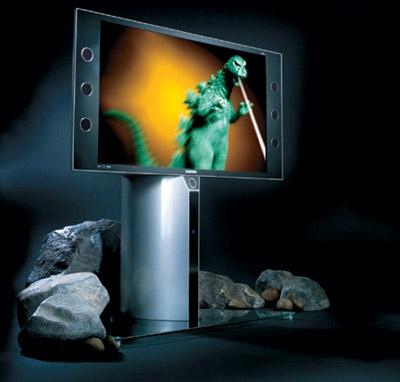DLP vs. LCD

Everybody wants a monster-size HDTV, so it came as no surprise when readers wrote in asking for head-to-head comparisons of the big-screen HDTV technologies. The first round came with "Plasma vs. LCD" (February/March, available on the S&V Web site). After reading our unflinching test of those popular types of hang-on-the-wall TVs, you asked to see LCD take on DLP. Well, here ya go: a battle of the big-screen, rear-projection TV (RPTV) behemoths.
As with our plasma vs. LCD face-off, we sought two same-size sets so that screen area wouldn't be a factor in the comparison. A pair of 50-inch contenders quickly came into view: Samsung's HL-P5085W DLP ($3,900) and Hitachi's 50VS810 LCD ($4,200). The biggest difference between the sets, aside from their display technologies, is that the Hitachi is a fully integrated, digital cable-ready HDTV while the Samsung is an HDTV monitor that needs a separate tuner to receive digital broadcasts. Other than that, both are among the spiffiest-looking and most feature-laden TVs in each manufacturer's line.
One key similarity between the two sets is the native resolution of their display chips: 1,280 horizontal x 720 vertical pixels. But LCD and DLP RPTVs use very different processes to display pictures. Most DLP (Digital Light Processing) sets have a single chip and a rotating filter that chops white light from a lamp into a sequence of red, green, and blue beams. The beams are reflected from the chip, which contains hundreds of thousands of tiny mirrors. These mirrors pivot thousands of times a second to control the brightness of the pixels and are synchronized to display a red, green, or blue projection that the eye blends into a full-color image.
In an LCD (liquid-crystal display) projection TV, light from a single lamp is directed to a trio of miniature LCD panels that process the red, green, and blue light components separately. The pixels in each panel contain a liquid-crystal material that regulates the amount of light passing through them by twisting and untwisting in response to electrical voltages. After exiting the LCD panels, the three colored beams are combined by a prism and projected onto the screen by a lens.
Just watch a basketball game, concert, or movie in high-definition on a DLP or LCD TV, and you'll see how much more crisp and detailed their pictures look compared with old-school CRT (cathode-ray tube) rear-projection sets. But detail is only one part of the video-quality equation. Equally important is how well they handle things like color, contrast, and the reproduction of deep blacks - areas where the CRT traditionally excelled. It's even more important to know how they compare with each other.
To find out, we set up the Samsung DLP and Hitachi LCD side by side and performed an exhaustive comparison. Besides myself, the judges included technical editor David Ranada (DR) and contributing technical editor David Katzmaier (DK), with each of us making his evaluations alone and independently of the others. Each set was calibrated to the best of our ability to conform to the established standards for both regular and high-def programs. In a perfect world, this would have resulted in exactly matched color, brightness, and contrast levels, but given how differently each manufacturer adjusted its TV at the factory, the match wasn't perfect (see "Lab Setup," facing page, for details). It was close enough, though, for us to feel comfortable that our test results are valid.
Our procedure was simple: Standard- and high-def programs and test patterns were split using a Gefen 1:2 HDMI splitter or a Key Digital HD View 6 component-video distribution amplifier and viewed on both TVs simultaneously. We ranked each TV's contrast, color, picture detail, and picture uniformity on a scale from 0 to 5.
Contrast describes the range of tonal steps between the deepest shadows and brightest highlights. It also covers fine points like the set's ability to maintain solid shadows through changes in overall picture brightness. Color examines how well the set displays a full range of colors at different brightness levels, as well as its overall color intensity. And picture detail gauges the image's sharpness, while picture uniformity judges its consistency across the screen.
As with the results of our plasma vs. LCD comparison, our judgments here aren't necessarily representative of all models on the market. But by choosing high-end DLP and LCD RPTVs from reputable makers, we're giving you a good idea of what to expect when shopping for a big-screen HDTV.





























































